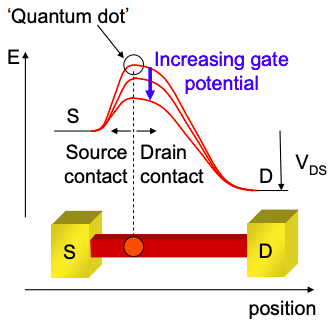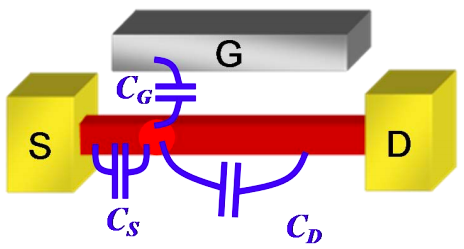5.11: Quantum dot models of quantum wire transistor channels
- Page ID
- 51622
Under bias we expect a spatial variation in the potential along a quantum wire. Current flow may also vary the charge density along the wire, which in turn affects the potential profile. Thus, the potential variation must be determined self consistently with the current flow.
We have seen in Part 4 that the conduction band edge in a ballistic conductor is determined by the point of maximum potential in the conductor. For electrostatic purposes, we will approximate this point on the quantum wire as a quantum dot, and then employ our discrete capacitive models of potential to calculate changes in the conduction band edge.
Usually the highest potential is located next to the source, because application of forward bias at the drain pulls the potential down along the channel.




